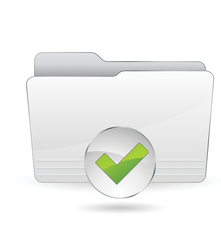Creating backups with TimeVault
Clean Archivist

© Beboy, Fotolia
Many backup solutions vie for the user's attention. TimeVault follows a simple approach and integrates seamlessly with the Gnome desktop.
The TimeVault backup tool automatically creates snapshots in the background, restoring files with the press of a button. To save space, the TimeVault tool only saves files that have changed since the last snapshot, and it simply creates links to all other files. If you delete a specific snapshot or if you lose a snapshot as a result of a crash, you only lose one version of the file.
So that TimeVault is available to each user on the system, you can assign permissions; however, only the system administrator is allowed to configure the program or delete snapshots.
Installing TimeVault
TimeVault [1] is a fairly recent development and currently available only in beta version. Because the program is quite new, you will not find prebuilt binaries in the repositories of even the most recent distributions. Source code and Ubuntu package downloads are available online [2].
[...]
Buy this article as PDF
(incl. VAT)
Buy Linux Magazine
Subscribe to our Linux Newsletters
Find Linux and Open Source Jobs
Subscribe to our ADMIN Newsletters
Support Our Work
Linux Magazine content is made possible with support from readers like you. Please consider contributing when you’ve found an article to be beneficial.

News
-
AerynOS Alpha Release Available
With a choice of several desktop environments, AerynOS 2025.08 is almost ready to be your next operating system.
-
AUR Repository Still Under DDoS Attack
Arch User Repository continues to be under a DDoS attack that has been going on for more than two weeks.
-
RingReaper Malware Poses Danger to Linux Systems
A new kind of malware exploits modern Linux kernels for I/O operations.
-
Happy Birthday, Linux
On August 25, Linux officially turns 34.
-
VirtualBox 7.2 Has Arrived
With early support for Linux kernel 6.17 and other new additions, VirtualBox 7.2 is a must-update for users.
-
Linux Mint 22.2 Beta Available for Testing
Some interesting new additions and improvements are coming to Linux Mint. Check out the Linux Mint 22.2 Beta to give it a test run.
-
Debian 13.0 Officially Released
After two years of development, the latest iteration of Debian is now available with plenty of under-the-hood improvements.
-
Upcoming Changes for MXLinux
MXLinux 25 has plenty in store to please all types of users.
-
A New Linux AI Assistant in Town
Newelle, a Linux AI assistant, works with different LLMs and includes document parsing and profiles.
-
Linux Kernel 6.16 Released with Minor Fixes
The latest Linux kernel doesn't really include any big-ticket features, just a lot of lines of code.

